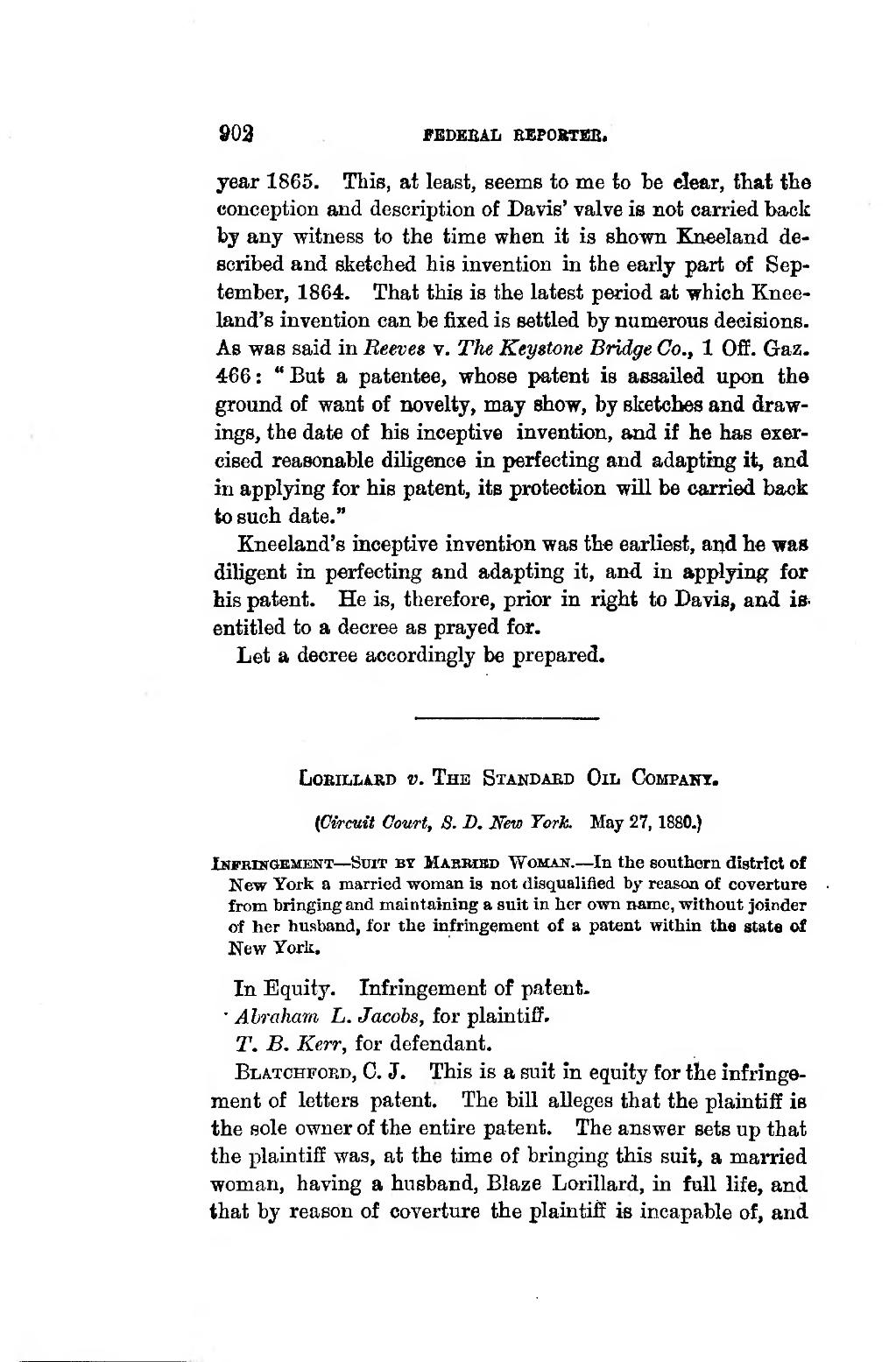903 ÏEDEEAL EEPORTBB. �year 1865. This, at least, seems to me to be elear, that the conception and description of Davis' valve is not carried back by any witness to the time when it is shown Kneeland de- scribed and sketched his invention in the early part of Sep- tember, 1864. That this is the latest period at which Knee- land's invention can be fixed is settled by numerous decisions. As v?as said in Reeves v. The Keystone Bridge Co., 1 Off. Gaz. 466 : " But a patentee, whose patent is assailed upon the ground of want of novelty, may show, by sketcbes and draw- ings, the date of Ms inceptive invention, and if he has exer- cised reaaonable diligence in perfecting and adapting it, and in applying for his patent, its protection •will be carried back to Buch date." �Kneeland's inceptive invention was the earliest, and he was diligent in perfecting and adapting it, and in applying for his patent. He is, therefore, prior in right to Davis, and i» entitled to a decree as prayed for. �Let a decree accordingly be prepared. ���LoEiLLiRD V. The Standard Oïl Compakt. (Circuit Court, S. D. New York. May 27, 1880.) �iHFKisaKMENT — Sdit bt Marribd Woman. — la the Southern district of Kew York a married woman is not disqualified by reason of coverture from bringingand maintaining a suit in her own name, without joinder of her liusband, for the infringement of a patent within tha state of New Yorlt. �In Equity. Infringement of patent. ■ Abraham L. Jacobs, for plaintiiï. �T. B. Kerr, for defendant. �Blatchfoed, g. J. This is a suit in equity for the infringe- ment of letters patent. The bill alleges that the plaintiff is the sole owner of the entire patent. The answer sets up that the plaintiïï was, at the time of bringing this suit, a married ■woman, having a husband, Blaze Lorillard, in fuU life, and that by reason of coverture the plaintiff is incapable of, and ����
